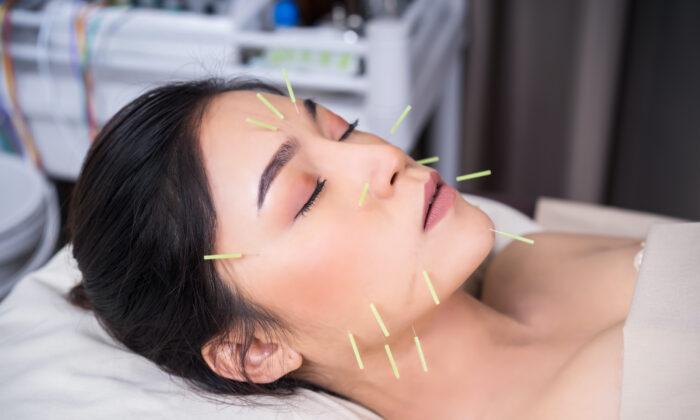Million of Procedures
In 2020 $16.7 billion was spent on cosmetic procedures in the United States. These were the most common procedures in three categories:- Nose reshaping (352,555)
- Eyelid surgery (325,112)
- Facelift (234,374)
- Liposuction (211,067)
- Breast augmentation (193,073)
- Botulinum toxin type A: Botox, Dysport, Xeomin (4.4 million)
- Soft tissue filler (3.4 million)
- Chemical peel (931,473)
- Laser skin resurfacing (997,245)
- Intense pulsed light (IPL) treatment (827,409)
- Tumor removal (5.2 million)
- Laceration repair (386,710)
- Maxillofacial surgery (256,085)
- Scar revision (263,643)
- Hand surgery (206,928)
Cosmetic Acupuncture—a Natural Alternative
While plastic surgery can help many people who have a medical need or severe issues, there are ways the average person can look younger without a scalpel. If the thought of going under the knife makes you nervous, there’s a nonsurgical alternative called cosmetic acupuncture. It uses the body’s innate healing to achieve a more youthful appearance.What Is Acupuncture?
Acupuncture is a technique that uses tiny sterile, disposable stainless steel needles inserted at specific points on the body (called acupuncture points) to correct various ailments and restore the body to homeostasis. The nature of the problem determines where the needles are applied on the body and the depth of insertion. Some theorize that there are as many as 2,000 acupuncture points on the human body.What Is Chinese Medicine?
Chinese medicine is an umbrella term that encompasses numerous modalities, including acupuncture and herbal medicine. One of the first records of acupuncture is found in the Huang Di Nei Jing (The Yellow Emperor’s Classic of Internal Medicine) and is approximately 4,700 years old.Cosmetic Acupuncture
Cosmetic acupuncture is a nonsurgical treatment used to reduce the signs of aging. Very fine needles are inserted on the face and body, increasing local circulation and stimulating collagen and elastin, filling out lines, and giving firmness to the skin for a healthy glowing complexion. Cosmetic acupuncture is an all-natural procedure with minimal risk and without the danger of side effects such as scarring, infection, or a lengthy recovery time.Current cosmetic surgery statistics seem to demonstrate a large global market for methods of improving one’s appearance. Cosmetic acupuncture offers a noninvasive option for those interested in enhancing their appearance with a more natural approach. While some people can have dramatic results with cosmetic acupuncture, they are usually more subtle than with surgical procedures, so being aware of the limitations of cosmetic acupuncture treatments is something to consider before taking the plunge.
- Minimize fine lines
- Eliminate dark circles and puffy eyes
- Improve complexion by increasing local circulation
- Tighten skin
- Lighten scars
- Improve dark spots and skin blemishes
- Tighten pores
- Brighten eyes
- Improve the look of wrinkles
- Reduce frown lines
- Lift sagging skin and drooping eyelids
For example, someone may be coming in for cosmetic acupuncture treatments, but during the initial questioning, they explain that they’re having some digestive problems. Interestingly, the other issues often affect the facial features they’re unhappy about. The good news is that we can do the cosmetic treatment and work on the digestive issues simultaneously. Many internal problems can manifest in changes on the skin, so digging deeper is vital to figuring out what can be done to correct any underlying health concerns.
Cosmetic Acupuncture Treatments
A variety of things can be incorporated into cosmetic acupuncture treatments, and each practitioner will have their own approach. Some examples are facial masks, essential oils, serums, different types of massage, and assorted manipulation tools to stimulate specific points. These can all be used to enhance the treatments’ overall effect.The number and length of treatments depend on where you go but are generally done once a week for about ten weeks. After that, treatments go down to once a month for a few months and then on an “as needed” basis. Frequency can also depend on the individual, what they’re trying to achieve and how well they respond.
- abnormal clotting
- blood thinners
- bruising easily
- pacemakers
- high blood pressure
- diabetes
- migraines
So, whether you are noticing changes in your skin, want to improve the way you look and feel, are looking for a natural alternative to surgery, or all of the above, cosmetic acupuncture might be something to consider. It’s a safe, inexpensive way to enhance the natural beauty already present in all of us.






